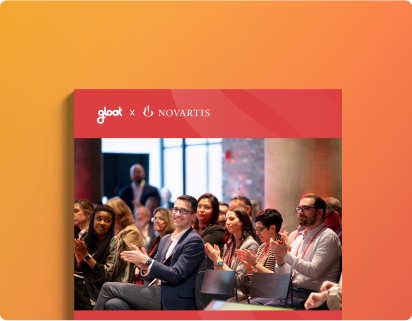Why agile workforce planning is key to organizational success
Level up your workforce planning efforts with a more dynamic approach

In a working world as ever-changing as ours, no business can afford to neglect workforce planning. Making sure the right talent (with the right skills!) is in the right places at the right time is key to ensuring your company will be able to respond quickly to whatever challenges come your way.
In the past, workforce planning may not have seemed like as much of a priority because skill needs were once predictable and relatively constant. However, now that we’re entering the Post-Industrial Age, that’s no longer the case.
Particularly as the rise of AI promises to shift the capabilities companies will need to meet their business objectives, every organization must embrace an agile approach to workforce planning so that they can shift gears and pivot as needed—at a moment’s notice.
What is agile workforce planning?
Agile workforce planning is an ongoing approach to ensuring your organization has the right capabilities within your workforce to align with and meet your current and future business objectives. It involves reviewing your current staff, examining existing and future skill needs, and identifying where your supply of talent isn’t aligning with your demand for skills.
By pinpointing emerging knowledge gaps, companies can plan effectively to ensure their organizations have properly skilled employees in the correct roles, which helps support the business in maintaining efficient operations, rapidly responding to change, and achieving its goals. In contrast, without an agile workforce planning strategy, leaders will struggle to access the talent they need to get key priorities across the finish line efficiently.
Understanding the need for workforce development
Workforce development is a crucial part of workforce planning. The right development strategy will enable your people to hone the skills your business needs to thrive—both now and in the future. Some key steps to upgrade workforce development processes include:
#1. Identify skill gaps
In order to develop a comprehensive workforce planning strategy that will dictate the future of employee development, leaders must first identify current and emerging skill gaps. In the past, figuring out where expertise falls short was challenging because most organizations lacked a single source of truth for workforce skills.
Fortunately, the rise of AI-powered skills intelligence systems like Gloat’s Skills Foundation is here to change that. These platforms are updated in real-time and pull from employees’ LinkedIn and CVs, in turn capturing the full range of knowledge they’re bringing to the table and identifying any areas of expertise where they might be falling short.
#2. Align with organizational goals
Once leaders have an understanding of where skills lie and any emerging knowledge gaps, they must begin developing skill-building strategies in accordance with their workforce planning strategy. The best skill-building approaches are rooted in the needs of the business and any overarching goals that the company is striving to achieve.
#3. Address industry trends and changes
In addition to aligning skill-building and staffing needs to business goals, executives must prepare for these needs to change as new trends emerge and challenges arise. The most effective workforce development plans are continuously evolving to ensure the business will have access to the skills that will prove most important in the future. Since these skill needs will likely keep changing over time, your workforce development strategy must continue to evolve as well.
5 essential elements of agile workforce planning
There are 5 key components of agile workforce planning, including:
#1. Training and upskilling programs
Training and upskilling programs describe intentional learning processes where employees gain exposure to deeper knowledge, typically through content-based coursework and experiential learning opportunities. They enable employees to develop their mastery of both technical and soft skills. The goal of these initiatives is to help people move into more advanced roles and ensure workforces have the skills their businesses need to accomplish strategic priorities.
#2. Career development pathways
When employees can see the various professional directions they can go in at your organization, they will be inspired to continue developing their skills so they can turn these ambitions into realities. The best career pathing tools, found within an agile workforce OS, can pinpoint the exact skills people will need to hone so they can step into their dream roles, as well as projects and gigs within their company that will help them advance their careers.
#3. Succession planning
Part of a successful approach to workforce planning is thinking ahead and determining what training employees will need to eventually step into high-priority leadership roles. Succession planning ensures that productivity and employee morale don’t take a hit during periods of management turnover because there will always be employees with the skills and experience required to lead with confidence.
#4. Performance management
HR leaders must take stock of employees’ progress and monitor the work they’re doing and how it aligns with expectations for their roles. Managers should meet with their direct reports regularly to discuss how various projects are going and identify any missing skills that might be holding people back. By routinely evaluating employees’ performance, leaders can adjust their workforce planning to ensure all-star workers are on track to move into high-priority roles and employees whose performance needs improvement are getting the help they’re looking for.
#5. Recruitment and retention strategies
The final component of agile workforce planning is thinking strategically about talent acquisition and retention. Companies that practice agile workforce planning will use skills intelligence tools to identify the capabilities their workforce currently lacks. When possible, the organization may strive to reskill or upskill employees with transferable skills. In other instances, executives may decide to bring new talent into the organization so they can acquire skills that no one in the company currently possesses.
Building an agile workforce planning framework
Looking to level up your agile workforce planning framework? Consider the following action items:
#1. Assessing current workforce capabilities
Every agile workforce planning approach starts by taking stock of the skills your workforce already has. Skills intelligence systems are ideal for this process because these platforms don’t just spotlight the capabilities leaders know their people have. Instead, they parse resumes to identify knowledge that employees honed in the past, even if this expertise doesn’t apply to their current position. This allows leaders to get the most in-depth view of their workforce’s skills, which will come in handy when trying to determine what training needs to focus on.
#2. Forecasting future workforce trends
Building on this in-depth understanding of existing skills, leaders must then assess what kind of knowledge their organization will need in the future. Once again, skills intelligence systems will be particularly useful here. The best platforms leverage market and third-party data to create skills benchmarks that showcase how your workforce’s expertise in various fields stacks up to your competition’s. The systems can also identify emerging knowledge gaps and particular skills that are likely to grow in importance in the coming years.
#3. Setting clear objectives and goals
Once leaders have an understanding of the skills their workforce has and the expertise they must build, the next step to agile workforce planning is setting some goals to guide your skills initiative. These objectives could include upskilling a certain number of employees so they can tackle a new type of project or helping workers with transferable skills reskill to move into more sunrising positions.
#4. Designing training programs
Finally, leaders can use the goals they set as the building blocks for a future-fit training program. It’s up to executives to create ample pathways for learning that allow employees to hone the skills their workforces will need in the future. Leaders should consider tapping into a talent marketplace to help employees gain access to relevant experiential learning opportunities such as mentoring and shadowing. The AI-powered systems generate suggestions for projects, gigs, and mentorships that employees can participate in, based on the skills they have and the knowledge they wish to acquire.
Want to see what a successful agile workforce planning approach looks like in action? Check out Novartis’s case study to learn how the leading pharmaceutical company mapped skills to roles with 33,000 job codes across 105,000 employees.





